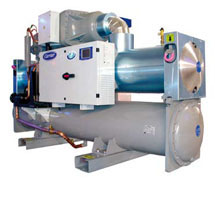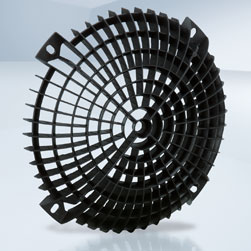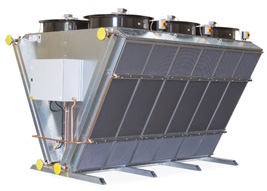Carrier Technology Protects the Sistine Chapel
VATICAN – During an event on cultural heritage at the Vatican Museums, Carrier will introduce an innovative heating, ventilation and air conditioning system (HVAC).
Carrier announced the end of the installation work of the HVAC system which is designed to protect the frescoes of Michelangelo against the damage caused by the presence of a large number of tourists.
The new HVAC system installed by Carrier will be unveiled to the public in the coming days during an event entitled “The Sistine Chapel after 20 years – New Breath, New Light” to be held in the Vatican Museums. The audience will be composed of cultural heritage protection professionals.
The system installed by Carrier has two AquaForce 30XWV water coolers which each have a capacity of 580 kilowatts. The software and components are specially designed for this system and allow the system to reduce its energy needs and thus meet climate requirements to protect the masterpieces of the chapel.
A video application developed by UTC BUILDING & INDUSTRIAL SYSTEMS has been set up to allow the HVAC system to monitor the number of visitors. This intelligent control system is essential to modulate the level of intuitive power. The yield can double or triple with the new system. The Vatican has signed a maintenance contract with Carrier Distribution Italy SpA to ensure the proper functioning of this innovative system.
According to Mr. Antonio Paolucci, director of the Vatican Museums, the purpose of the installation is conservation, not restoration of the frescoes. This is why technology Carrier was chosen to protect the masterpieces.
This solution is the result of collaboration between a team of world experts composed of AdvanTE3C engineers and technical staff of the Vatican. The development of this solution required the use of the latest technology modelling and computer simulation. It was designed to meet certain requirements of the chapel as the flow, humidity, quality and air temperature and the noise level comparable to that of a church. The system has also been developed to meet future anticipated requirements.
According to Mr Geraud Darnis CEO UTC BUILDING & INDUSTRIAL SYSTEMS “Helping the Vatican with our advanced technologies to protect the extraordinary heritage that is the Sistine Chapel has been for us a remarkable opportunity. We mobilized our capabilities and world-class engineering design for this project, and we are extremely proud of the result. ”
Carrier had developed and installed the first air conditioning system in the Sistine Chapel in 1993. This facility was designed to accommodate a maximum load of 100 visitors at the same time. Today, the chapel daily receives 20,000 visitors. This led to the installation of the new system to support up to 2,000 simultaneous visitors in all seasons.
In addition to the installation, the Governorate of the State of Vatican City has signed a guaranteed contract with UNITED TECHNOLOGIES Corp (UTC). It includes in particular the guarantee of protection and security works of art, spaces and visitors from the Vatican Museums by the use of construction technology developed by UTC. Both parties are going through this contract work together on integrated solutions to cover the HVAC system, elevators and escalators. It also concerns the cover of fire detection and alarm systems, fire extinguishing system and protection against fire, electronic security, access control, video surveillance services and related software solutions.
According to the explanations of the Rev. Rafael Garcia de la Serrana Villalobos, director of technical services of the Vatican “The excellent results today reflect the success of our development process. After a collaboration of nearly three years Carrier, my teams and I were able to make a successful working relationship and jointly overcome the obstacles in developing this masterpiece of technology”.
Michel Grabon, director of CARRIER ADVANTE3C Europe considers that this project will highlight the role of high technology in the protection of historical works. “When we started to develop this system, Paolucci told us to think in terms of five, six, seven centuries and consider this project as a work for humanity. Our solution is managed in a way that will achieve the updates necessary to meet the changing needs of the Vatican. We will continue to innovate to protect the splendour of Michelangelo’s fresco “he explained.















